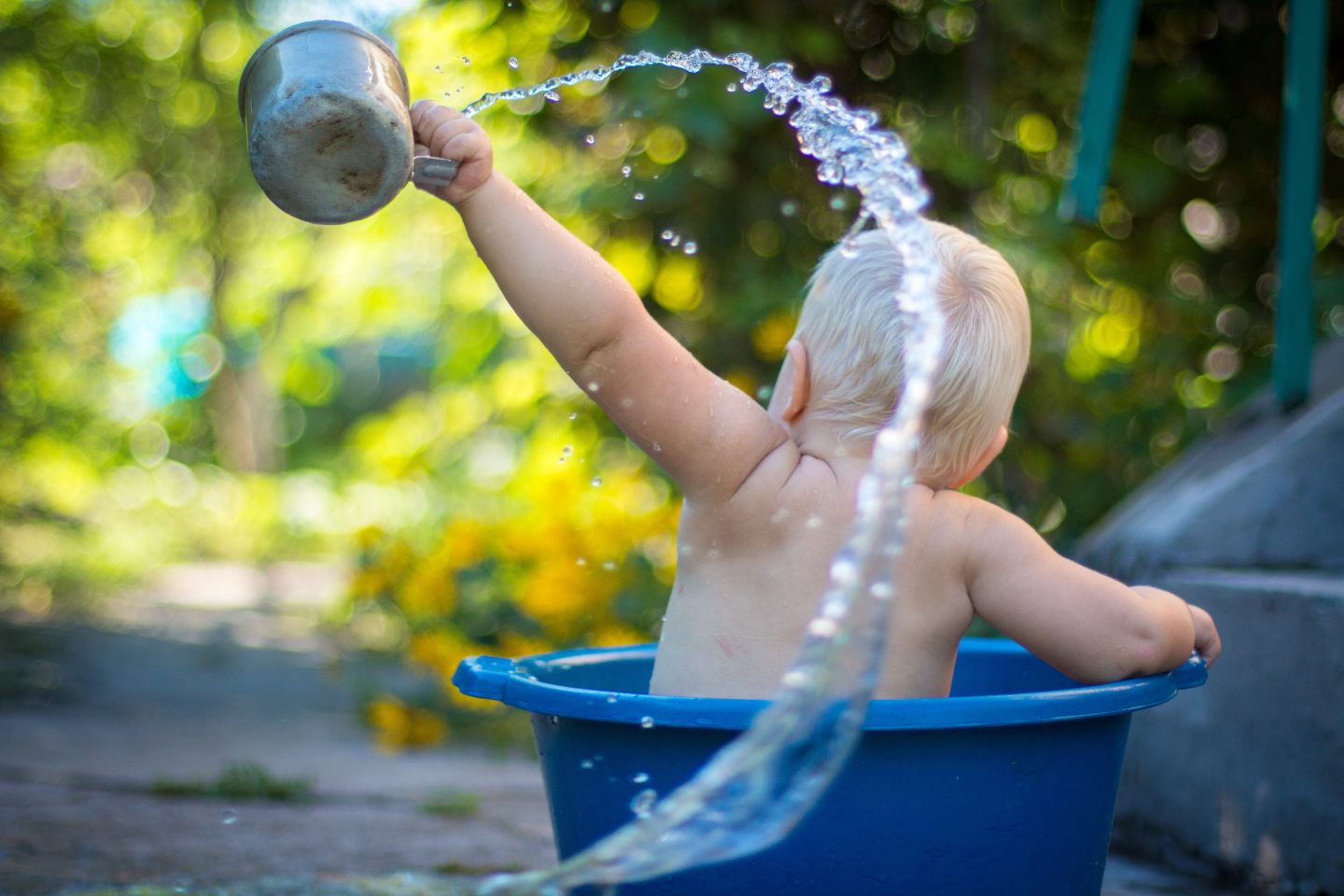
Sensory play is a vital tool to help babies learn about the world around them. It involves stimulating their senses through different textures, colours, shapes, materials and sound. Research has demonstrated that sensory play can have several benefits for babies, including cognitive, motor and physical development.
Babies’ brains are like sponges, constantly absorbing and processing new information. Sensory play experiences help to build neural pathways in the brain, which are essential for learning and problem-solving. An example of this is learning about the permanence of objects. Prior to learning this, babies perceive an object to have been lost when it goes out of sight. However, through games such as ‘peek-a-boo’, where babies see your face disappear and then re-appear again, babies learns that objects are actually permanent.
Through exposure, you can teach a baby about different textures, such as rough or smooth surfaces. You can also teach them to recognise different colours and shapes, particularly in their early days as they develop their eyesight. Sensory play also helps to develop your baby’s fine motor skills, as they use their fingers and hands to manipulate different objects. This is important for later development, as it will help them with everyday tasks such as writing, drawing, and even typing on a laptop.
How can I give my baby sensory experiences?
There are many different types of sensory play that are suitable for babies, depending on their age and developmental stage. For example, babies as young as six months can enjoy playing with soft toys, looking at black & white contrast cards or playing with small rattles. They can also explore different textures, such as sand, water, and play dough, which provide a range of tactile experiences.
Sensory play can also be incorporated into everyday routines, such as bath time, tummy time and meal time. For example, bath toys such as cups and sponges provide a range of sensory experiences. They may also enjoy playing with small musical instruments such as mini pianos, castanets and tambourines, purpose-built to help them experience different sounds.
As babies grow to become toddlers, they can engage in more complex sensory play activities, such as using tweezers to pick things, placing objects through shape sorters and balancing pieces. These activities help to develop their creativity and imagination, as they learn to express themselves through different media.
How can I easily find sensory toys that are suitable for my baby?
We, at Grow With Me, offer a subscription box that gives babies access to sensory toys appropriate to their age. This takes out all the hassle of having to constantly research which toys are appropriate and safe for your child.
Our toy box subscription runs for 0-24 month olds. Each box contains high quality sensory and wooden toys, which includes rattles, sensory balls, mini musical instruments, contrast cards and many, many more! Our research-based play box has been designed to improve motor skills, imagination, independence and creativity, all whilst having tons of fun!
We recently launched our quarterly box, which costs £60 for 3 months, which works out at just £20 per month. Each box contains 6-9 toys from leading brands such as Hape, Lamaze and Bigjigs. This subscription includes everything you’ll need to give your baby the best sensory experience in their younger years. It also contains 2 books to read to your child, many of which contains sensory cues in the form of different textures, colours and occasionally sounds!
Written by Vishal from Grow With Me
